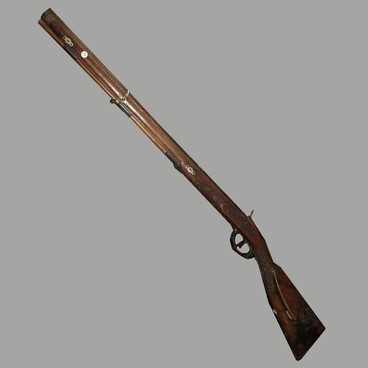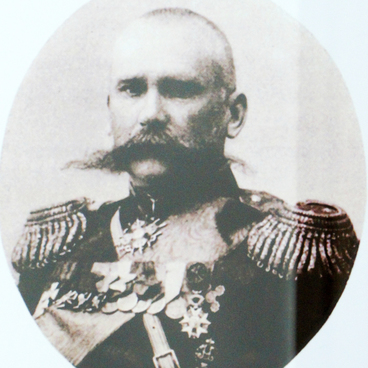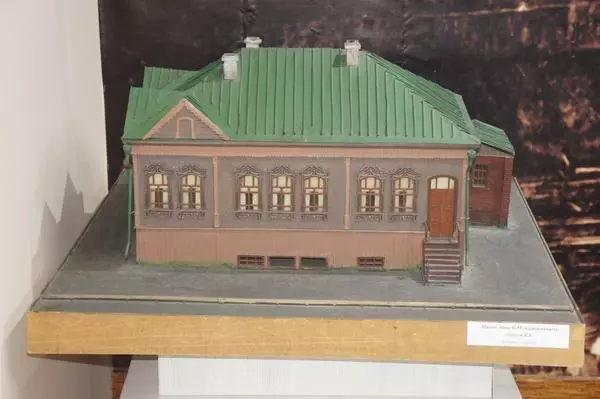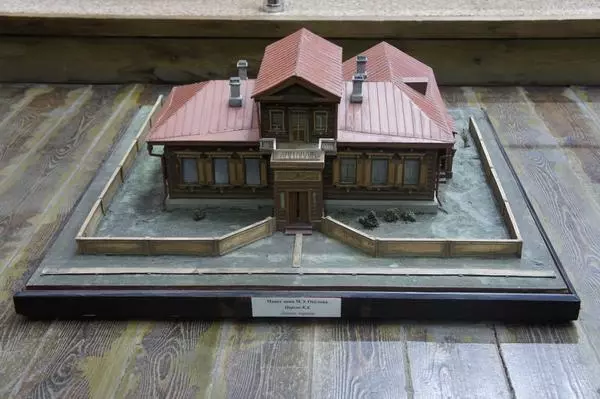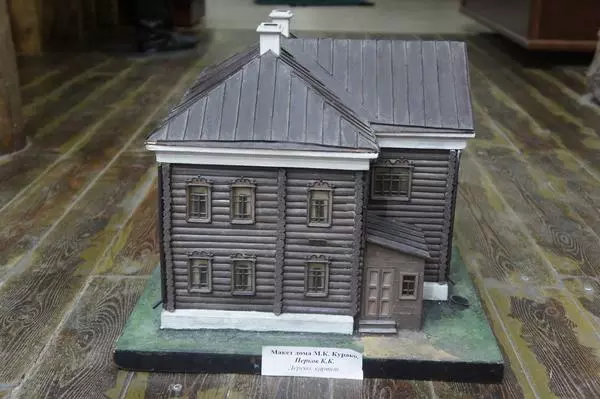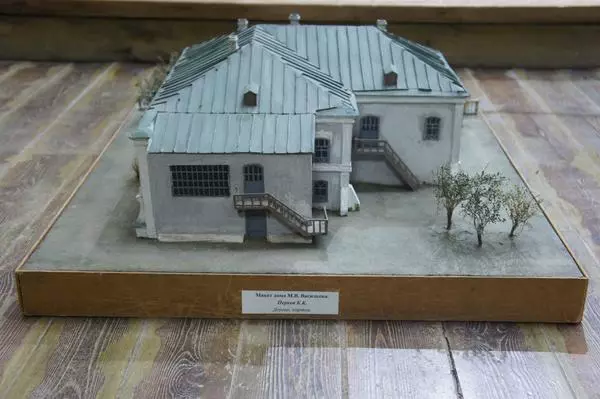The Alexander Pushkin Community Hall was opened in 1906 in Nagornaya (renamed Narodnaya) Street in Kuznetsk. It was built with donations from active local residents, mostly with the money contributed by merchants and gold miners. Particularly generous donations, as researchers say, were made by Sergey Popov, who headed the municipal government, and Elena Morozova, the wife of a Biysk merchant and philanthropist Alexander Morozov, who was visiting her relatives in Kuznetsk. The construction was also supported by townspeople who were not so well-to-do, but nevertheless donated their money by putting it in a special jar that had a slot for coins.
The development of the Community Hall design was commissioned to Andrei Kryachkov, a famous architect from Tomsk. The construction was managed by Karp Shmykov, a talented carpenter and joiner.
The one and a half-storey log house became a remarkable example of Siberian wooden Art Nouveau, a new architecture style for Kuznetsk. Wooden Art Nouveau implied ornate exteriors, therefore, the facades of the Community Hall were decorated asymmetrically, fancy oval windows were decorated with complex transoms, the roof was adorned with intricate bends and tin-covered spire.
The Community Hall housed a library and chess, billiards and theater clubs. For the needs of the latter, a special room was arranged in the building: a real theater hall with a stage, an orchestra pit and dressing rooms in wing areas.
It was not only the Community Hall itself that was much liked by Kuznetsk residents, but also a spacious garden laid out around it. In the summer, townspeople liked to walk in the garden, and in winter they came to the skating rink that was made there.
After the revolution of 1917 the hall continued to operate as a social and cultural center. In the early 1920s, Kuznetsk theatre life got a new impetus: professional directors for amateur talent groups, vocalists, a prompter and other specialists came to the Community Hall. Aside from the theater company, the city put together a brass band and a concert propaganda team who also performed on the Community Hall stage.
After some time the building was turned into a cinema house. In 1934 it was visited by statesman Mikhail Kalinin (commonly referred to as the All-Union headman), and twenty years later, by resolution of Kuznetsk District Executive Committee, the Community Hall was renamed the Kalinin Cinema House. In 1979 the Community Hall building was transferred to the local ethnography museum that planned to organize its branch there, but the wooden building was destroyed in a big fire.
The development of the Community Hall design was commissioned to Andrei Kryachkov, a famous architect from Tomsk. The construction was managed by Karp Shmykov, a talented carpenter and joiner.
The one and a half-storey log house became a remarkable example of Siberian wooden Art Nouveau, a new architecture style for Kuznetsk. Wooden Art Nouveau implied ornate exteriors, therefore, the facades of the Community Hall were decorated asymmetrically, fancy oval windows were decorated with complex transoms, the roof was adorned with intricate bends and tin-covered spire.
The Community Hall housed a library and chess, billiards and theater clubs. For the needs of the latter, a special room was arranged in the building: a real theater hall with a stage, an orchestra pit and dressing rooms in wing areas.
It was not only the Community Hall itself that was much liked by Kuznetsk residents, but also a spacious garden laid out around it. In the summer, townspeople liked to walk in the garden, and in winter they came to the skating rink that was made there.
After the revolution of 1917 the hall continued to operate as a social and cultural center. In the early 1920s, Kuznetsk theatre life got a new impetus: professional directors for amateur talent groups, vocalists, a prompter and other specialists came to the Community Hall. Aside from the theater company, the city put together a brass band and a concert propaganda team who also performed on the Community Hall stage.
After some time the building was turned into a cinema house. In 1934 it was visited by statesman Mikhail Kalinin (commonly referred to as the All-Union headman), and twenty years later, by resolution of Kuznetsk District Executive Committee, the Community Hall was renamed the Kalinin Cinema House. In 1979 the Community Hall building was transferred to the local ethnography museum that planned to organize its branch there, but the wooden building was destroyed in a big fire.
